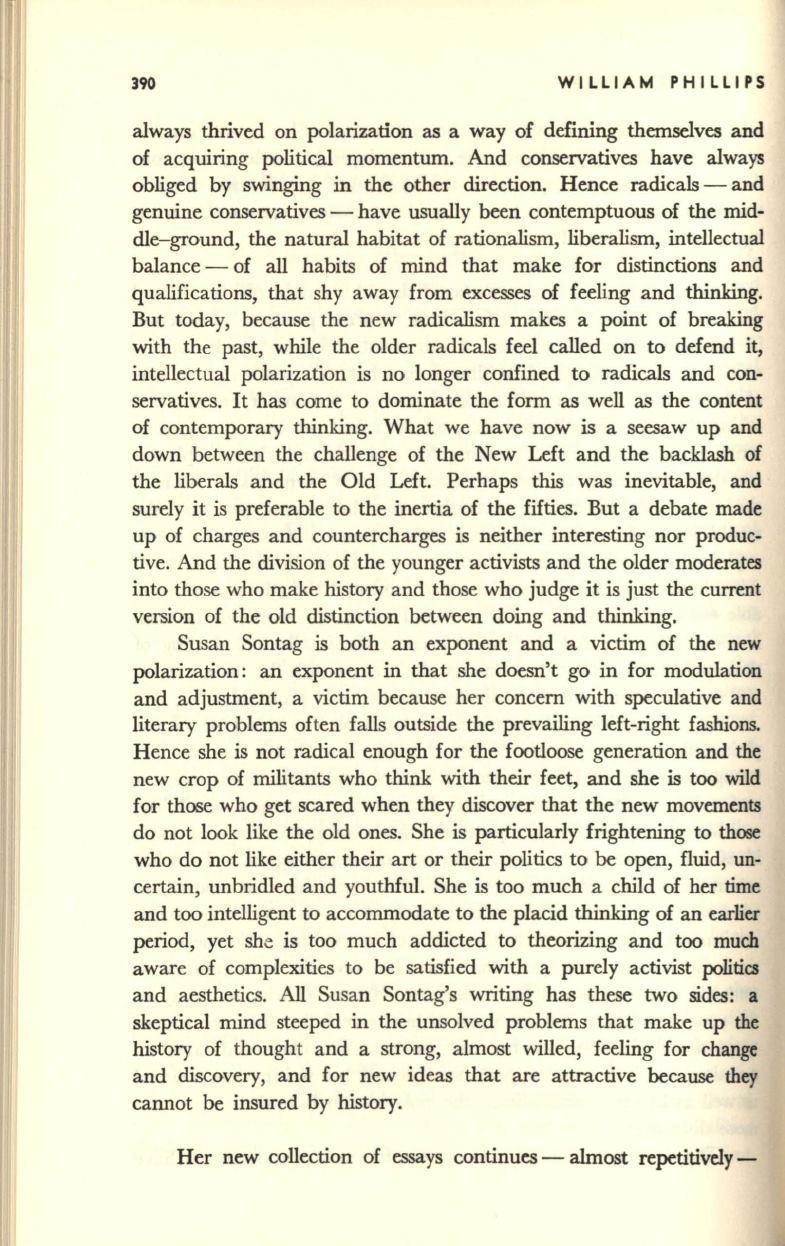
390
WILLIAM PHILLIPS
always thrived on polarization as a way of defining themselves and
of acquiring political momentum. And conservatives have always
obliged by swinging
in
the other direction. Hence radicals - and
genuine conserv.atives - have usually been contemptuous of the mid–
dle-ground, the natural habitat of rationalism, liberalism, intellectual
balance - of all habits of mind that make for distinctions and
qualifications, that shy away from excesses of feeling and thinking.
But today, because the new radicalism makes a point of breaking
with the past, while the older radicals feel called on to defend it,
intellectual polarization is no longer confined to radicals and con–
servatives. It has come to dominate the form as well as the content
of contemporary thinking. What we have now is a seesaw up and
down between the challenge of the New Left and the backlash of
the liberals and the Old Left. Perhaps this was inevitable, and
surely
it
is preferable to the inertia of the fifties. But a debate made
up of charges and countercharges is neither interesting nor produc–
tive. And the division of the younger activists .and the older moderates
into those who make history and those who judge
it
is just the current
version of the old distinction between doing and thinking.
Susan Sontag is both an exponent and a victim of the new
polarization: an exponent in that she doesn't go in for modulation
and adjustment, a victim because her concern with speculative and
literary problems often falls outside the prevailing left-right fashions.
Hence she is not radical enough for the footloose generation and the
new crop of militants who think with their feet, and she is too wild
for those who get scared when they discover that the new movements
do not look like the old ones. She is particularly frightening to those
who do not like either their art or their politics to be open, fluid, un–
certain, unbridled and youthful. She is too much a child of her time
and too intelligent to accommodate to the placid thinking of an earlier
period, yet she is too much addicted to theorizing and too much
aware of complexities to be satisfied with a purely activist politics
and aesthetics. All Susan Sontag's writing has these two sides: a
skeptical mind steeped in the unsolved problems that make up the
history of thought and a strong, almost willed, feeling for change
and discovery, and for new ideas that are attractive because they
cannot
be
insured by history.
Her new collection of essays continues - almost repetitively-


